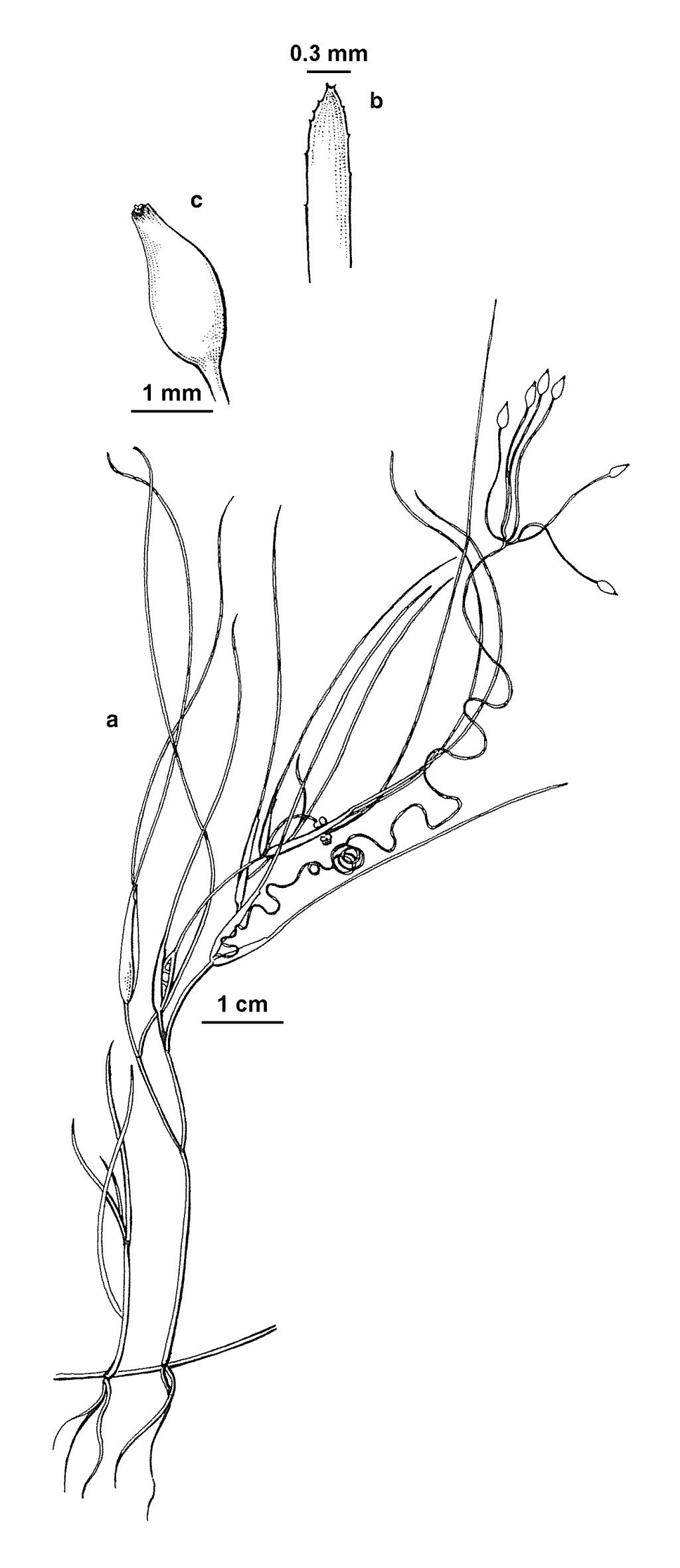Ruppia polycarpa
R.MasonAnnual or delicate perennial herb. Branches not always obvious, up to 20(–40) cm long. Leaves 5–15 cm long, less than 0.5 mm wide; undamaged apex obtuse to subacute. Perennating swollen shoots sometimes formed in ephemeral habitats, then sickle-shaped. Inflorescence raised to water surface on an axis which is usually less than 1 m long; axis coiled after pollination. Carpels (4–)8(–16), initially subsessile, stalk elongating as carpels mature until it is longer than carpel. Fruiting carpel 2–3 long, 0.5–0.8 mm diam. Flowers and fruits Oct.–Feb.
LoM, Wim, GleP, Brid, VVP, VRiv, GipP, OtP, WaP, CVU, DunT, EGL, Strz. Also WA, SA, NSW, Tas. New Zealand. Occurs in freshwater of dams, ditches and small creeks, in brackish water or in saline coastal lakes and lagoons.
Conn, B.J. (1994). Potamogetonaceae (including Ruppiaceae). In: Walsh, N.G.; Entwisle, T.J., Flora of Victoria Vol. 2, Ferns and Allied Plants, Conifers and Monocotyledons, pp. 147–155. Inkata Press, Melbourne.
 Spinning
Spinning




